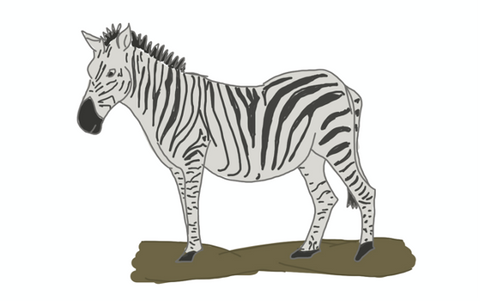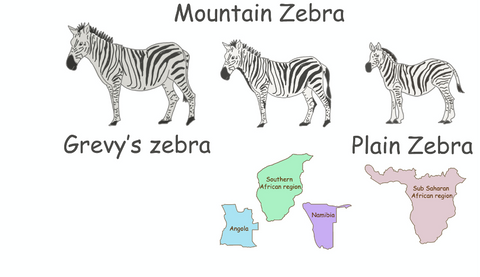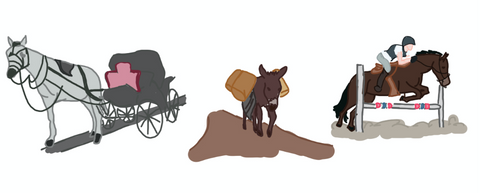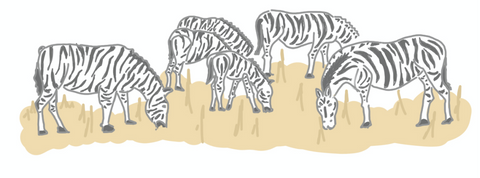Story
Hello my little readers! I hope you are all eager to learn with me today. Remember when we spoke about horses? Today, we will discuss another animal in the wild who is related to the horse. Can you think of which it may be? It has four limbs it walks on too, hooves on these limbs and a nuzzle-like nose. They also have a mane behind their heads of short hair standing upright and a swishy tail. I am avoiding telling you a particular unique fact about this animal because that will give it away! Can you guess without the last fact? Okay, I’ll tell you …It has stripes on its coat! Yes, it is the zebra.

There are three species of zebra: the Grevy’s zebra, plains zebra and the mountain zebra. If you’ve ever seen a zebra, you most likely have seen a plains zebra, They are very popular in zoos and in sub-Saharan Africa. Mountain Zebras also exist in the African regions in countries such as Angola, Southern Africa and Namibia. The grevy’s zebra is rare and the biggest species of zebra, it is rarely spotted because of its dwindling population.

The zebra is closely related to horses and donkeys/ asses. They have the same shape and the same strength. The zebra unlike horses and donkeys is a wild animal. Zebras are not as tall as horses and only measure 3.5 feet – 5 feet tall.

It lives primarily in the wild in large groups. As you know donkeys and horses are mostly used for transportation of either people or items. Many people have reportedly tried to train the zebra to be used in the same way as horses and donkeys.

Unfortunately, / Fortunately due to the zebra’s instincts which are programmed to the wild, it is hard to catch and to train. They are not as friendly to humans or trainers, like horses or donkeys.

Zebras live in groups. A group of zebras is called a ‘dazzle’, zeal or a herd. That isn’t too hard to believe due to their unique coats and colours. I would be dazzled to see them, wouldn’t you? They are also called a dazzle, because of an amazing feature that their coats gift them. When a group of zebras move very quickly, perhaps running away from a predator, their skin creates an illusion to trick the predators. The predator is unable to focus on one zebra and gives the zebra more time to run away successfully.

Zebras are social animals and do bond with other wild species when they are grazing called wildebeest and antelope. When these bonds are formed, they are called, ‘super herds’ and they can have as many as thousands of individual animals. But even within a super herd, the zebras stick to their own kind which is usually led by a dominant male zebra.

Male Zebras are called stallions, while female zebras are called mares and their young foals. Male foals reach independence, between one to three years. they usually leave the mini herd with their female siblings and parents, to join an all-male herd until they have a family of their own, which they get after winning a fighting competing among the males for the females.

Zebras are a very loyal creature to their herds. They can exhibit an aggressive streak when any from their herd is attacked or under threat. Stallions are known to have a strong bite and powerful kicks – which are common from hooved animals. Their kicks can kill their attacker or seriously wound them. They use these tactics against their predators such as wild cats and hyenas. Zebras also showcase amazing defence when a zebra is attacked or wounded.

The other zebras belonging to the herd, envelope the attacker in a semi-circle fashion and are prepared to fight for it and scare off the attacker.
When zebras are running away from threats or attackers, they run in a zig zag manner. The name of this illusion is called the ‘motion dazzle’. So now you know how the zebras stripes help them in the wild!

Zebras are herbivores, which means they eat vegetation, plants and grass. They do not eat meat, however many other animals view them as a good choice of prey such as lions, hyenas and other wild cats who prey on zebras regularly.


Zebras travel far and wide to get food and water. There is a yearly happening where loads of animals in East Africa travel 500 miles to access food and water. This is called the ‘Great Migration’ and zebras are recorded to be a part of this. Other animals include wildebeest and antelopes.

A very interesting fact about the zebra coat when you look closely is that they have a black coat with white stripes. I am pretty sure you thought they were white animals with black stripes. A lot of people do too. Their underbellies are white and so most people though they were a white animal. So you see how wonderful their skin is? It has managed to create illusions that confuse us too.
Each zebra’s stripes are unique to them, so they may not all have the same size or position of stripe. This would make it possible for them to identify each other. Their black and white coats also acts as a good bug repellent which keeps insects and other blood sucking parasites away from them.

Zebras live for about 25 years in the wild, but in zoos are recorded to live as old as 40 years. They live a long life in the wild if they are not killed. They can’t run as fast as horses, who can reach the 88Km /h but they can run up to 65km per hour.

Zebras have a lot of stamina, which means that they are able to maintain their strength and energy when making any physical effort for long periods of time. They also, have fantastic sight and hearing and so outrun a lot of their predators who cannot run for very long distances at the same pace. They are also different from horses in the noise they make. Horses ‘neigh’ which sounds a lot like them whining but zebras make a noise that sounds a lot like barking, such as dogs.
Zebras can rotate their ears in almost any direction; and is a language that other zebras can use to interpret their moods. Horses also have this same ability to move to rotate their ears because of the unique muscles in their ears. Their eyes are located on the sides of their head, so they have a grand view of everything beside and in front of them. They are believed to be one of the few mammals that sees in colour! Imagine if a zebra was a predator with all these great sight and hearing abilities? They would be very good at it.

Female zebras are usually pregnant for twelve to fourteen months and give birth to foals. Foals can stand within 20 minutes of being born, a bit different from humans’ babies that only walk when they are around 11 months. Could you imagine new-born babies walking around in the hospitals they are born in? Wouldn’t that be very weird?



Sources: LionWorldTravel, National geographic
Question Time
Q: All zebras look exactly identical. True/ False
Answer: False.
Q: Zebras are a very timid animal and will not defend themselves. True / False
Answer: False, Zebras can defend themselves and will defend a member of their herd too, if attacked.
Q: What do zebras eat?
Answer: Zebras are herbivores and so eat plants and vegetation.
Q: What animals are zebras closely related to?
Answer: Zebras are closely related to horse, donkeys and asses.
Q: Are zebras used to transport goods and people? Yes/ No
Answer: No, they live in the wild.
Q: Are zebras able to travel long distances? Yes/ No
Answer: Yes, zebras are able to travel long distances. They even participate in the Great Migration.
Q: Zebras do not associate with any other animals whatsoever. True/ False
Answer: False. They do associate with antelopes and wildebeest when grazing sometimes.
Q: Do zebras see in colour? Yes/ no
Answer: Yes, it is believed they do.
Q: How do zebras run away when they are being chased?
Answer: They run in a zigzag manner to confuse their predators.





Leave a comment